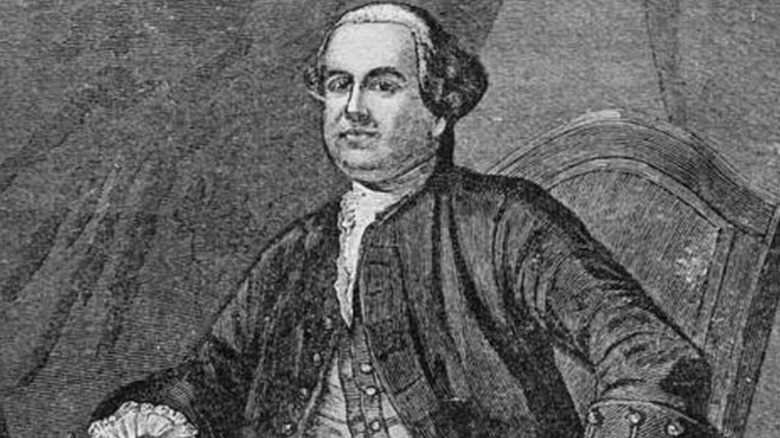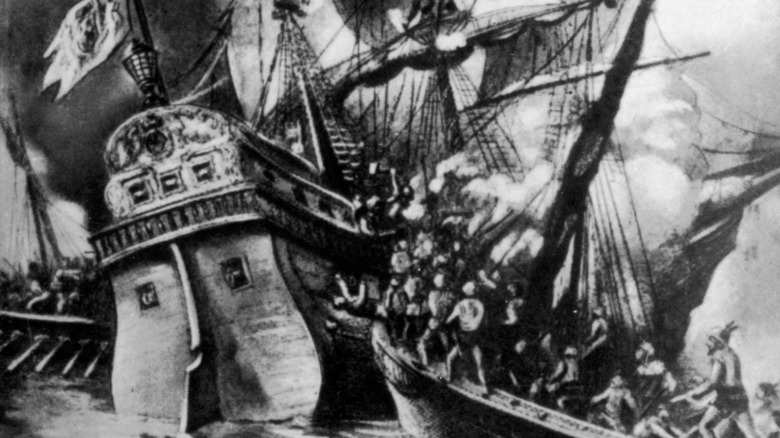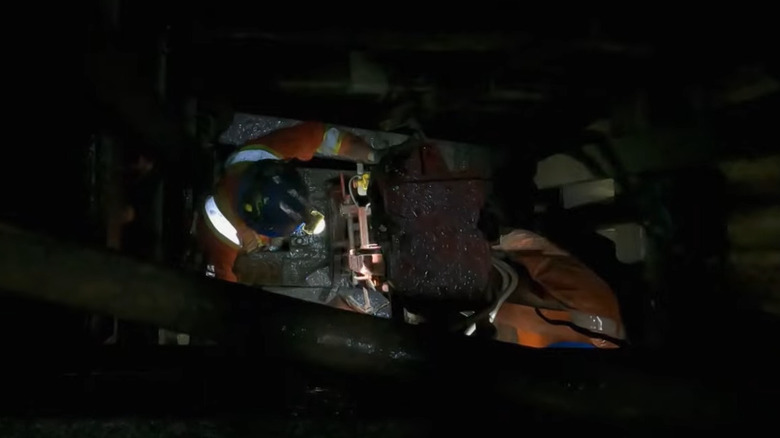The Curse Of Oak Island's Mysterious Sir William Phips, Explained
"The Curse of Oak Island" Season 11 is finally here, and fans of the long-running series are as eager as ever to dive back in. Throughout the season premiere, many familiar names and concepts are eased back into viewers' minds, perhaps none more prominently than Sir William Phips, the first governor of the Province of Massachusetts Bay.
A divisive figure in the 17th-century United Colonies, Phips was party to a number of recognizable historical events, including the Salem witch trials and — through one fashion or another — supposedly the creation of the Oak Island Money Pit. Avid watchers of the History series are sure to remember some aspects of Phips' alleged connection to the Nova Scotian bounty, but the entire theory of his potential involvement is likely stranger than even they can recall. And if the Season 11 premiere is any indication, his posthumous role in the Laginas' decade-long treasure hunt will only grow from here.
Sir William Phips allegedly played a part in the Glorious Revolution
In 1685, following the death of King Charles II, the Catholic James II ascended to the throne of England — much to the displeasure of the majority Protestant English population. The following year, Sir William Phips set sail for his first expedition to the wreck of the Spanish sea vessel Nuestra Señora de la Concepión, ultimately discovering $4 million in silver in today's USD, a heaping portion of which he gave to James II.
A theory presented (and tenuously supported by circumstantial evidence seen on "The Curse of Oak Island") by Oak Island historian Hammerson Peters, author of both volumes of "The Oak Island Encyclopedia," postulates that, at the same time, Phips politely asked for the return of the charter to Massachusetts. James II declined, presumably just as politely.
Meanwhile, Lord Charles Mordaunt, a self-exiled political enemy of King James II, was pleading with the Protestant William III, Prince of Orange, to invade England and overthrow James II. With William III in need of cash, Mordaunt supposedly partnered with Phips for another expedition to the Concepción, leading to Phips helping the Prince of Orange usurp the very royal he'd just paid (politely, of course).
The creation of the Oak Island Money Pit
Lord Charles Mordaunt and his crew allegedly returned to Holland with enough plundered silver for the Dutch and defecting English armies to enact their coup d'etat (successfully, we might add). Legend has it, however, that Sir William Phips did not part with the entirety of his findings. Instead, he traveled to the coast of Nova Scotia, where — according to Hammerson Peters' theory — he and his crew dug the Oak Island Money Pit.
Tragically, after having deposited their riches into the great hole, they unwittingly flooded the underground caverns below, trapping all they had just buried under dangerous amounts of subterraneous water. Over the years, the cast of "The Curse of Oak Island” has found treasure that — through carbon dating and historical-contextual analysis — seemingly validates the involvement of some 17th-century figure(s). Even in the Season 11 premiere, the crew found a "soft area" while drilling that potentially supports the flooding theory.


